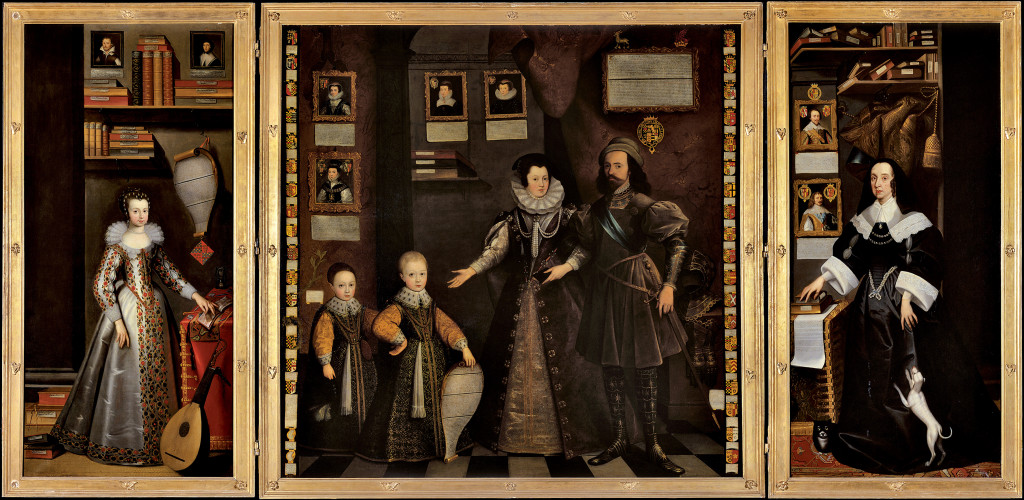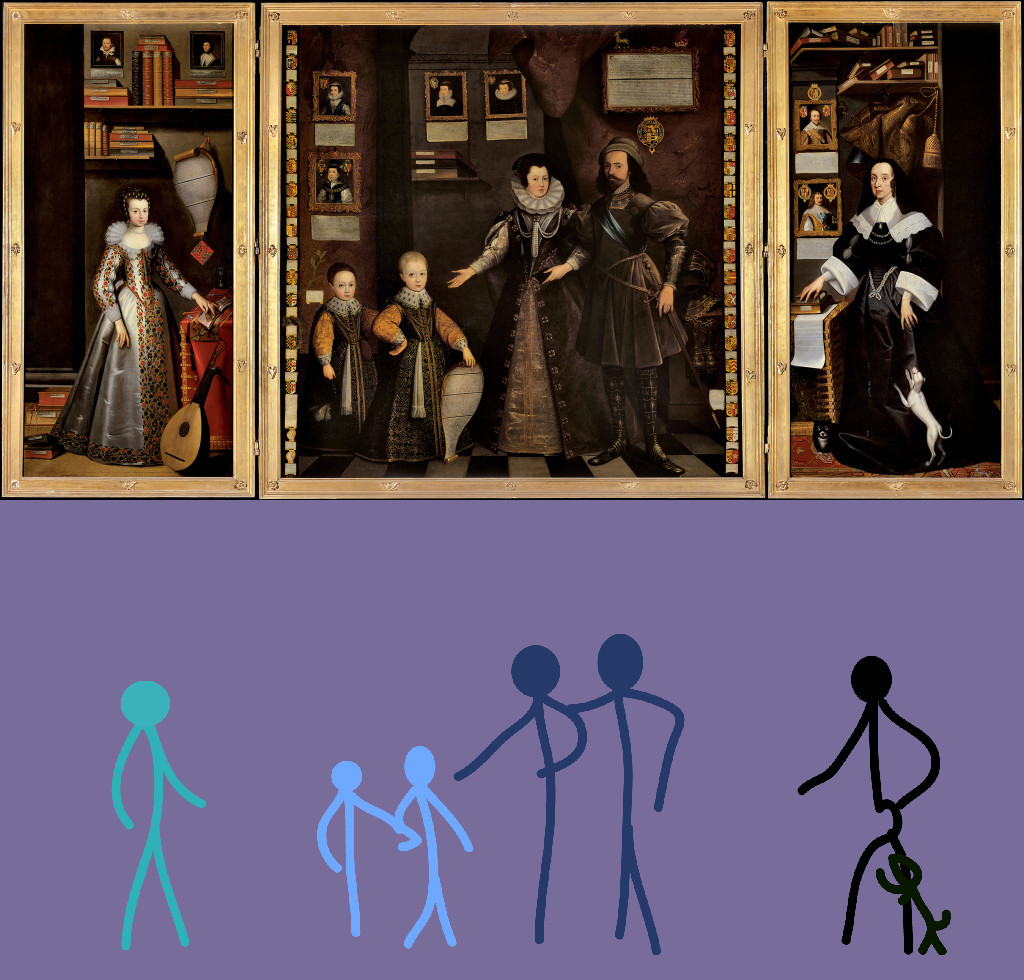By: Attributed to Jan van Belcamp (1610-1653)
Created: 1646, Collection: Abbot Hall Art Gallery,, Kendal, UK Rights: CC-By-SA
If you're proud of those kids, this is your opportunity to tell the world! If you can pull off the actual frame, we'll be impressed!
This monumental painting, which is nearly five metres wide, presents the family history and accomplishments of Lady Anne Clifford using a combination of portraiture, text and symbolism.
The left panel of the triptych depicts Lady Anne Clifford at the age of 15, when she was disinherited. The inclusion of portraits and books highlight Lady Anne’s education and refined upbringing.
The central panel depicts Lady Anne’s parents, Margaret Russell and George Clifford, third Earl of Cumberland, with her older brothers, who did not survive to adulthood. On the walls behind the family group hang portraits of Lady Anne’s four aunts. As Lady Anne was not born until 1590, she does not appear in the central panel as such, but Lady Margaret’s gesture hints that the daughter who would ultimately become the Clifford heir had already been conceived at the time of the original painting.
The right panel shows Lady Anne in late middle age, when she finally regained the Clifford estates. Portraits of Lady Anne’s two husbands hang behind her. The depiction of Lady Anne at fifty-six was used as the model for many subsequent portraits and is probably the only likeness in The Great Picture to have been painted from life.
The triptych is a composite work by a skilled copyist working from miniatures, portraits and whatever gowns and armour were still in Lady Anne’s possession. The piece has been attributed to Jan van Belcamp (1610-1653), a Dutch artist active in England who was a specialist in this genre.

